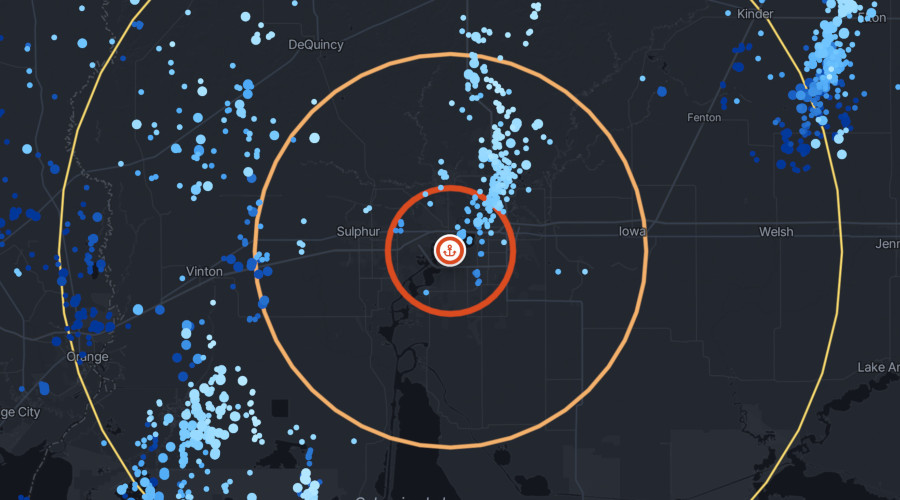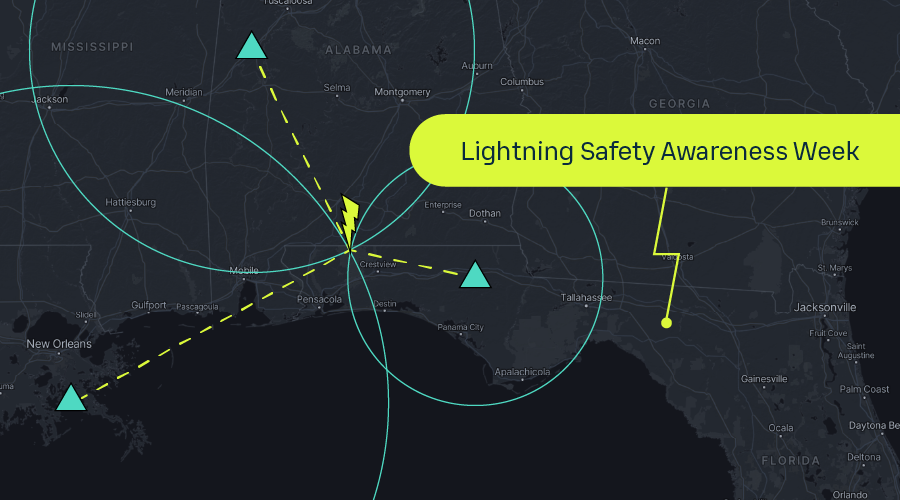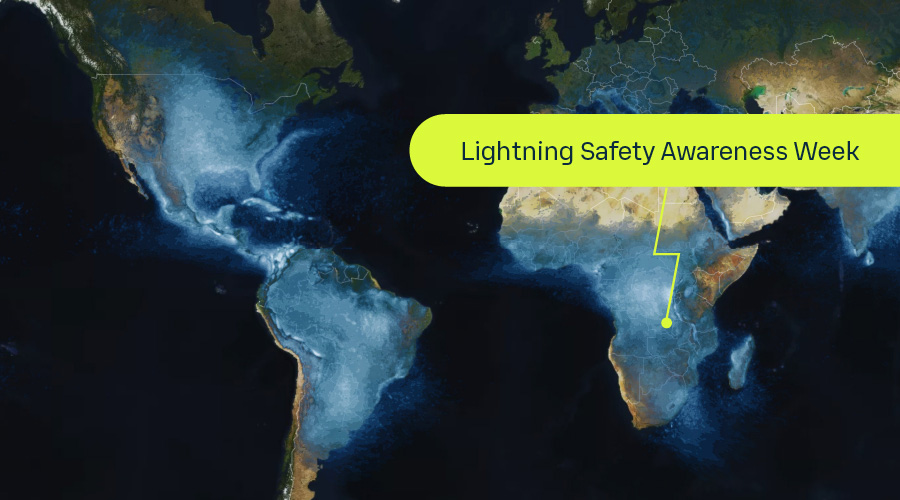Businesses that operate partly or fully outdoors must manage the risk of lightning strikes. Assessing the danger and developing safety procedures is an essential part of implementing a lightning safety plan.
Businesses must also account for the cost of weather-related downtime and disruption. In industries such as aviation and mining, storm-related stoppages and delays can cost thousands of dollars a minute.
In practice, every business must balance the needs of safety and continuity. But what’s right for one industry or location might not be right for another. In this post for Lightning Safety Awareness Week, we'll look at the choices you can make to find the best balance for your business.
How long does it take to get to a safe location?
If you are outdoors and hear thunder, you are within striking distance of lightning. As the saying goes, "When thunder roars, go indoors."
Personnel working in open areas, on tall structures, or around conductive or explosive materials are at the highest risk of lightning strikes. High-risk industries include construction, agriculture, utilities, forestry, mining, aviation, and emergency services. However, every business has unique circumstances that influence its safety procedures.
At an airport, the ground crew can move to safety quickly and shelter inside airport buildings. On a large wind farm, a technician needs more time to climb down from a turbine and reach a safe building or vehicle. Forestry workers employed in remote areas may require even more time to get to a safe place.
The backbone of any lightning safety plan is the ability to monitor approaching thunderstorms and alert workers before the risk becomes acute.
Choosing a suitable alert distance that gives your workers enough time to get to a safe location is a critical element of lightning safety. When choosing an alert distance for your business, ask:
How much time do you need to prepare for a possible shutdown?
How long does it take to cease operations and stop work?
How long does it take to get your people and equipment to a safe location?
The best practice is to set multiple levels of alert at different distances. Here is an example of how a company might configure three levels of lightning alerts:
When lightning is detected within 50 km of your location: Send an information alert by email to the operations director, “A storm is approaching, stand by for more information.”
When lightning is detected within 25 km of your location: Send a warning alert by email and SMS message to the operations director and team leads, “A storm is close, prepare to take action.”
When lightning is detected within 10 km of your location: Send an alarm alert by SMS message to all employees, “Risk of lightning, take shelter immediately,” and activate on-site sirens and flashing lights.
Setting a longer alert distance gives you a wider safety margin at the cost of longer downtime. Setting a shorter alert distance reduces downtime, but gives people less time to react and potentially increases the risk. Bear in mind that lightning can strike up to 16 km (10 miles) away from a storm.
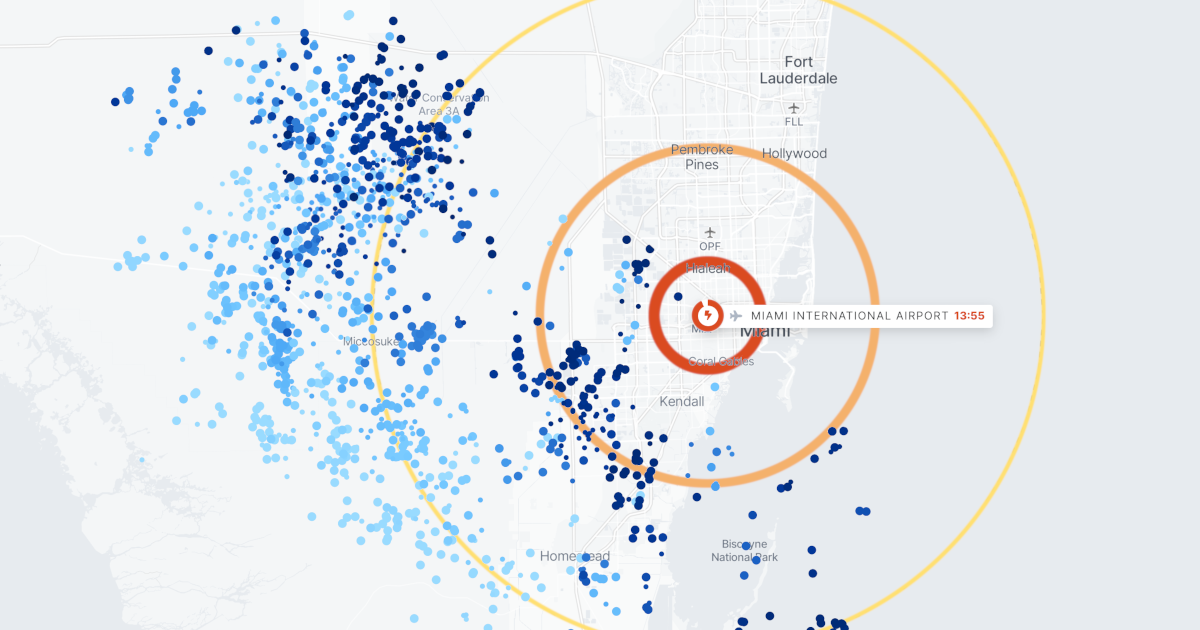
This image shows active information, warning, and alarm alert zones around Miami International Airport. The blue dots mark the location of lightning events, with dark blue dots being the most recent. An airport will typically continue operating until lightning is detected within the innermost alarm zone.
When is it safe to return to work?
Once your people are safe, it is important to continue monitoring the storm for further lightning events. Do not return to work while there is still a risk of lightning.
The time between the last detected lightning event and the decision to resume work is called the clear time. Setting a suitable clear time for your business is another critical element of lightning safety.
An airport will typically wait 15 minutes after the last detected lightning event within the alarm distance before resuming operations. A business with lengthy or complex start-up procedures may wait longer to reduce the chance of having to stop and reset again.
As with alert distances, setting a longer clear time increases your safety margin at the expense of longer downtime. Setting a shorter clear time minimizes downtime but risks multiple lightning stoppages in rapid succession, leading to additional delays, alert fatigue, and eventually mistrust of the system.
How to set up automated lightning alerts
Reliable access to real-time lightning data is vital for operational safety. Xweather Protect provides an all-in-one solution for severe weather monitoring, lightning alerts, and all-clear notifications without the need to purchase, install, or maintain any hardware or sensors.
You can add your assets and locations as points, polygons, or polylines for complete coverage. Xweather Protect supports multiple alert zones for each location, and you can configure the alert distance, clear time, and contact list for each zone.
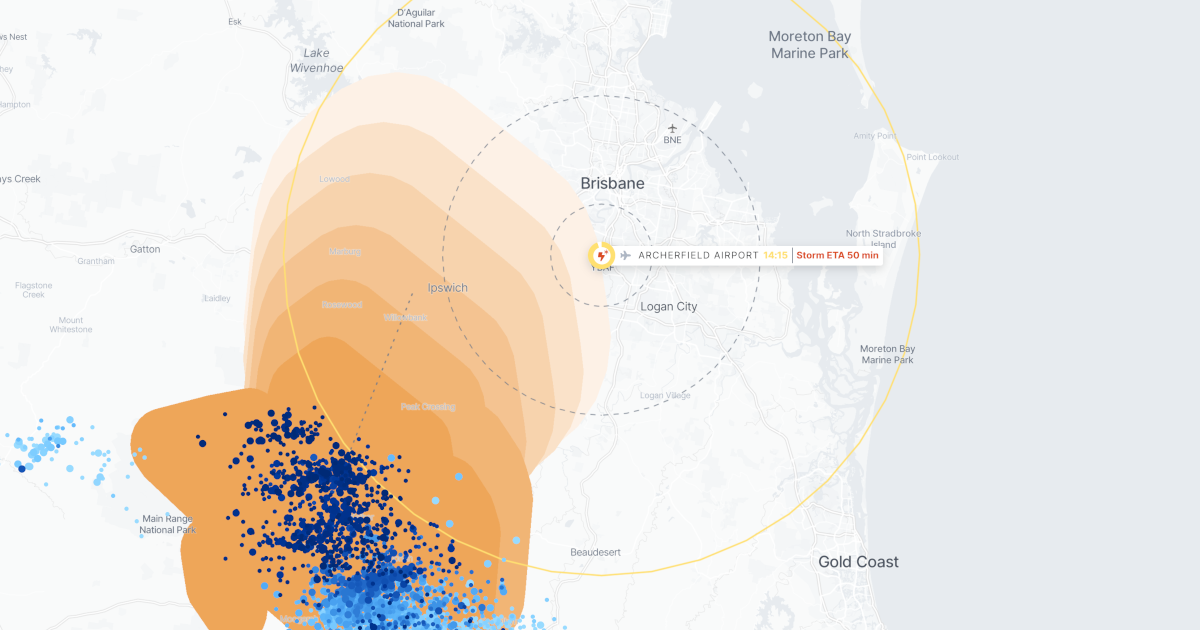
The orange polygons in this image show a forecast of areas at risk from lightning in the next 60 minutes. Each shade of orange represents a 10-minute interval. In this example, a storm is moving towards Archerfield Airport near Brisbane, Australia with lightning expected 50 minutes from now.
To enhance safety even further, Xweather also offers the unique ability to forecast and alert on lightning risk up to 60 minutes in advance. You can choose how far ahead of the forecast to activate the alert in 10-minute intervals up to 60 minutes in advance.
Xweather Protect sends automated lightning alerts and all-clear notifications by email and SMS message to ensure you get the right alerts to the right people at the right time.
Lightning detection you can rely on
Vaisala has been developing its lightning detection technology for over 40 years. Today, our lightning detection networks provide the world's most consistently accurate and reliable lightning data, detecting 99.9% of thunderstorms worldwide and recording more than two billion lightning events every year. This is 5–10 times more than any other network or technology, which is why Vaisala Xweather is the primary source of lightning data for the National Weather Service, the Federal Aviation Administration, the U.S. Air Force, the U.S. Navy, and many more companies and organizations.
Put your plan into action
To learn more about balancing safety and continuity, watch our recorded demo, "Prepare for lightning season with Xweather Protect."
How to set up real-time lightning alerts for your locations
How to get ahead of danger with lightning forecast alerts
Examples of alert configurations for different industries

